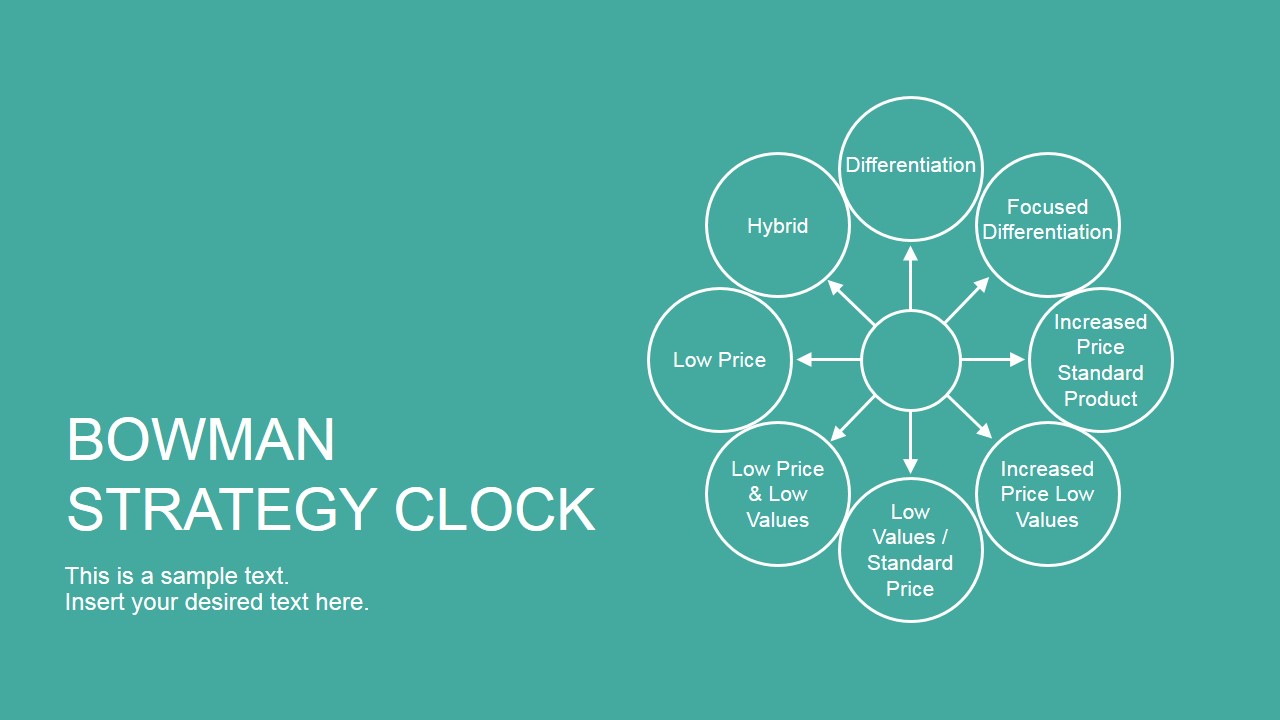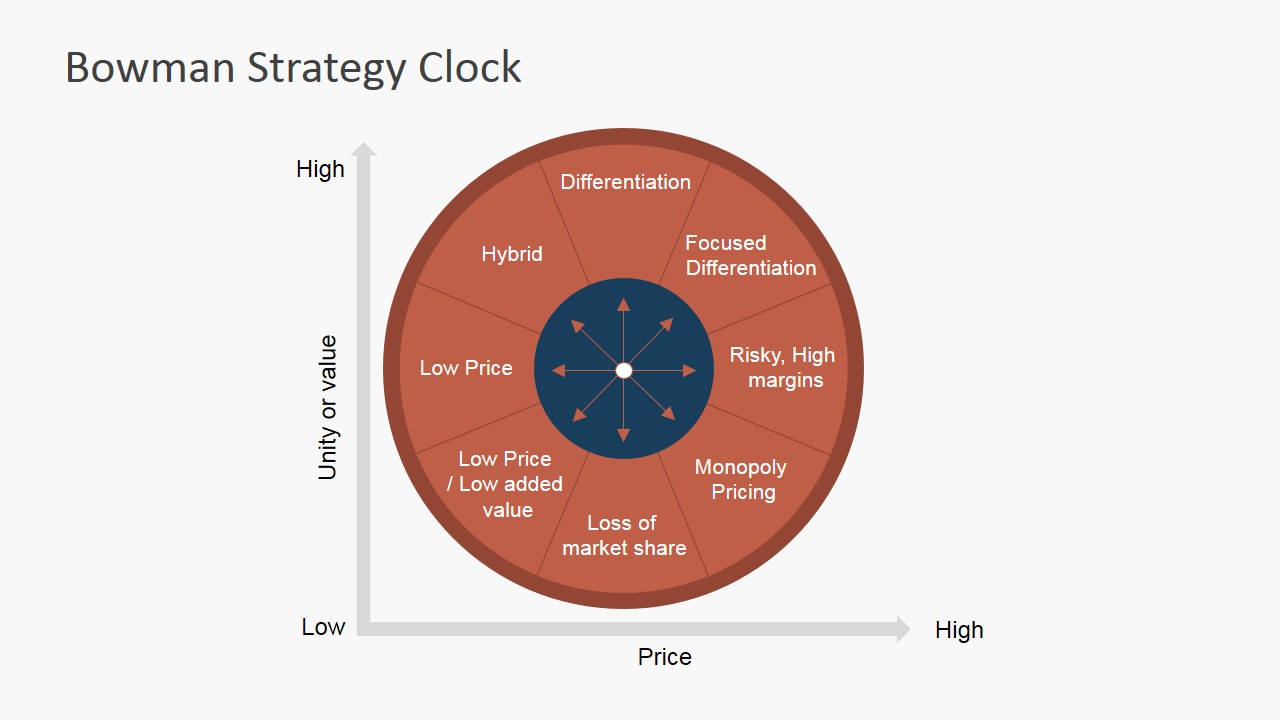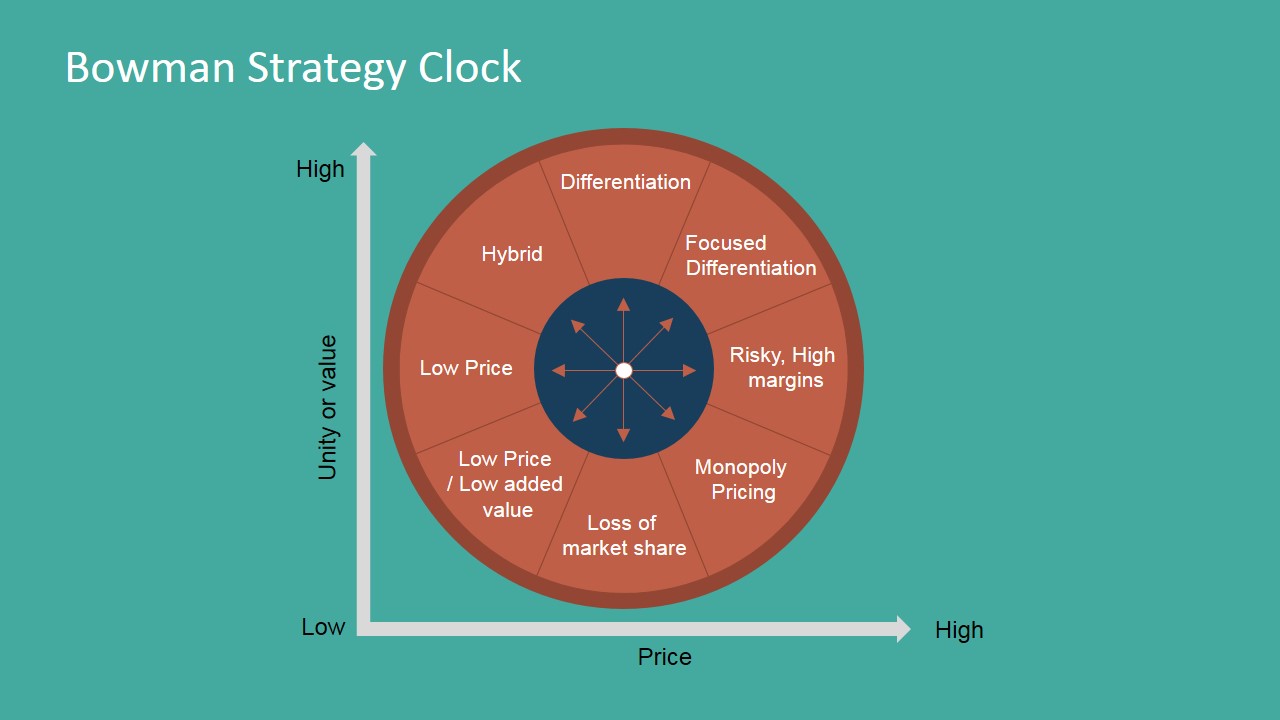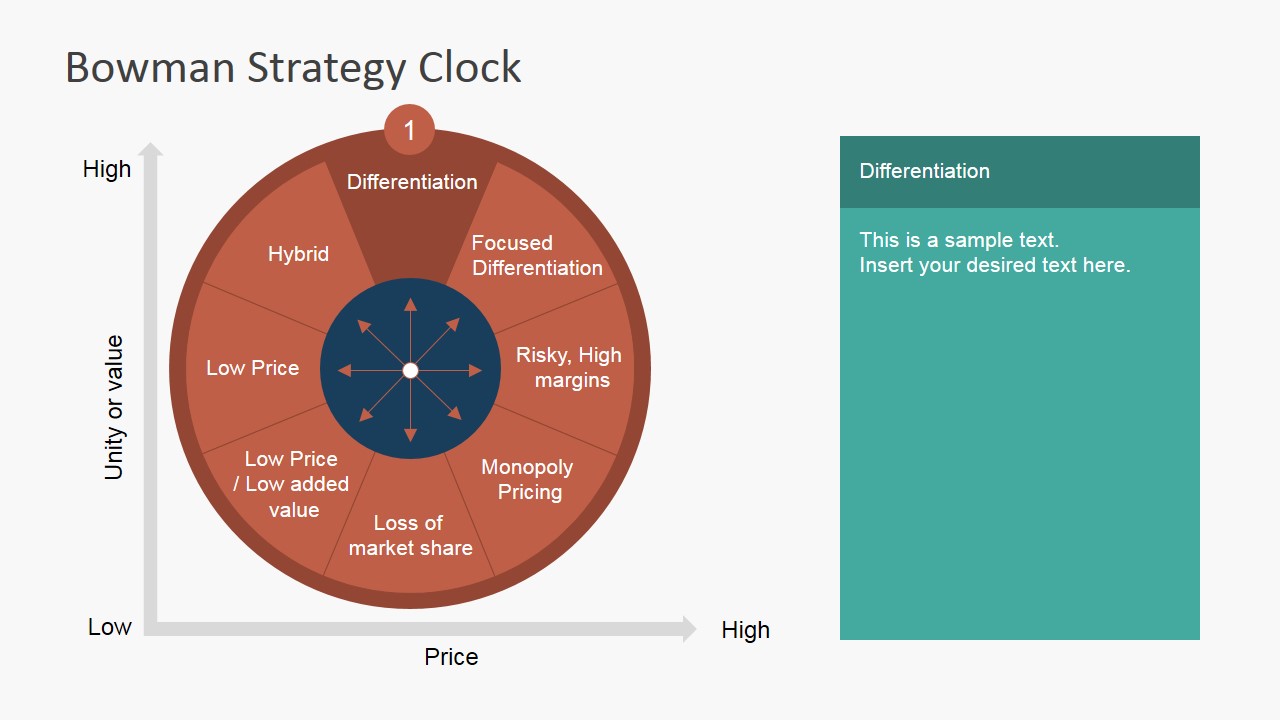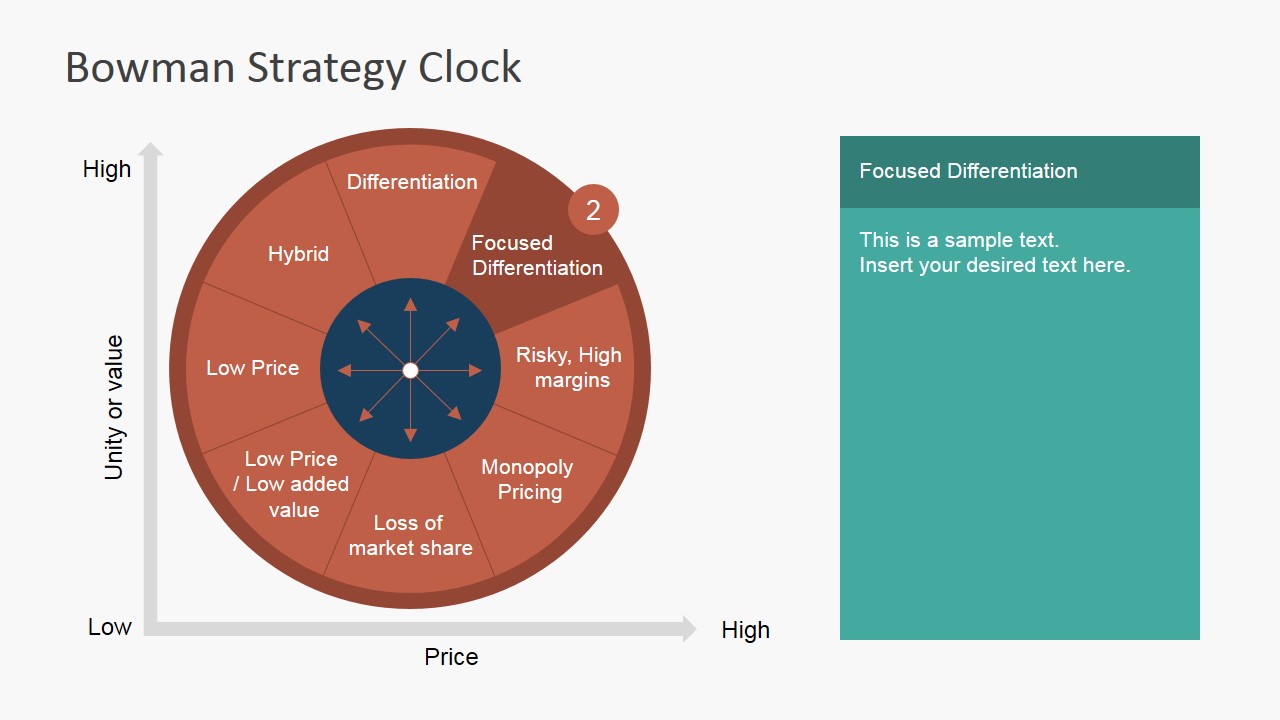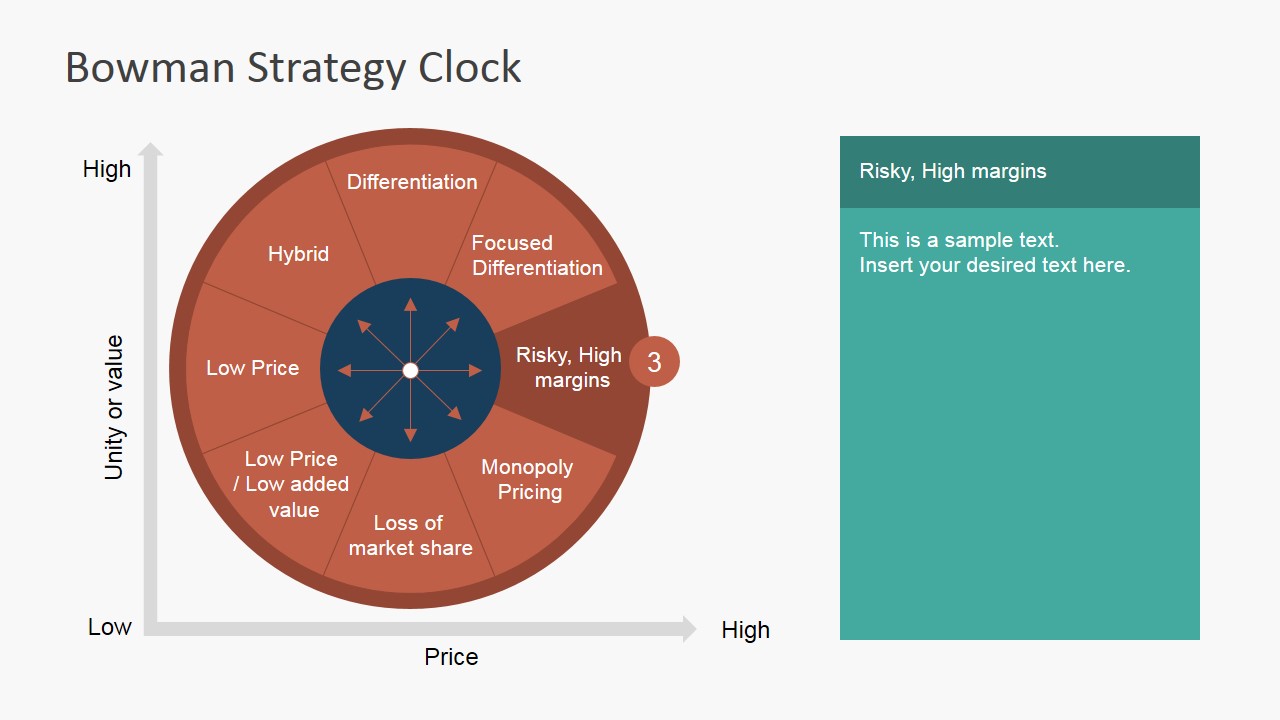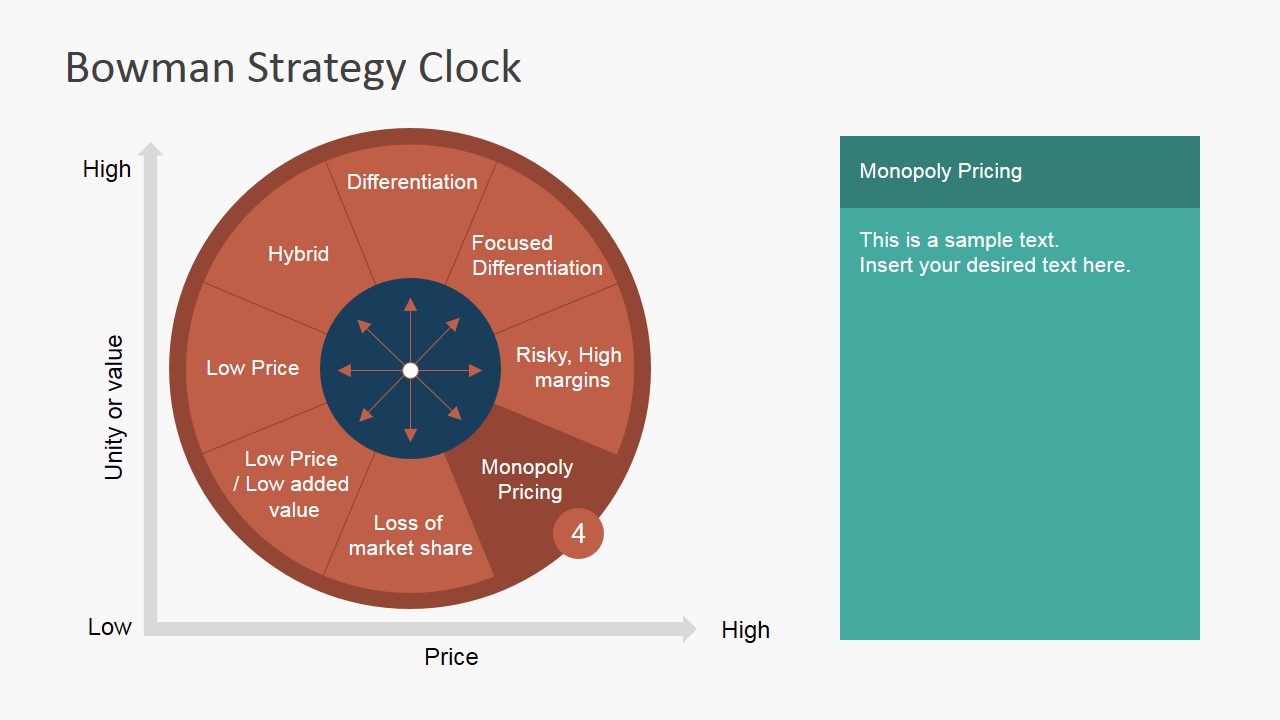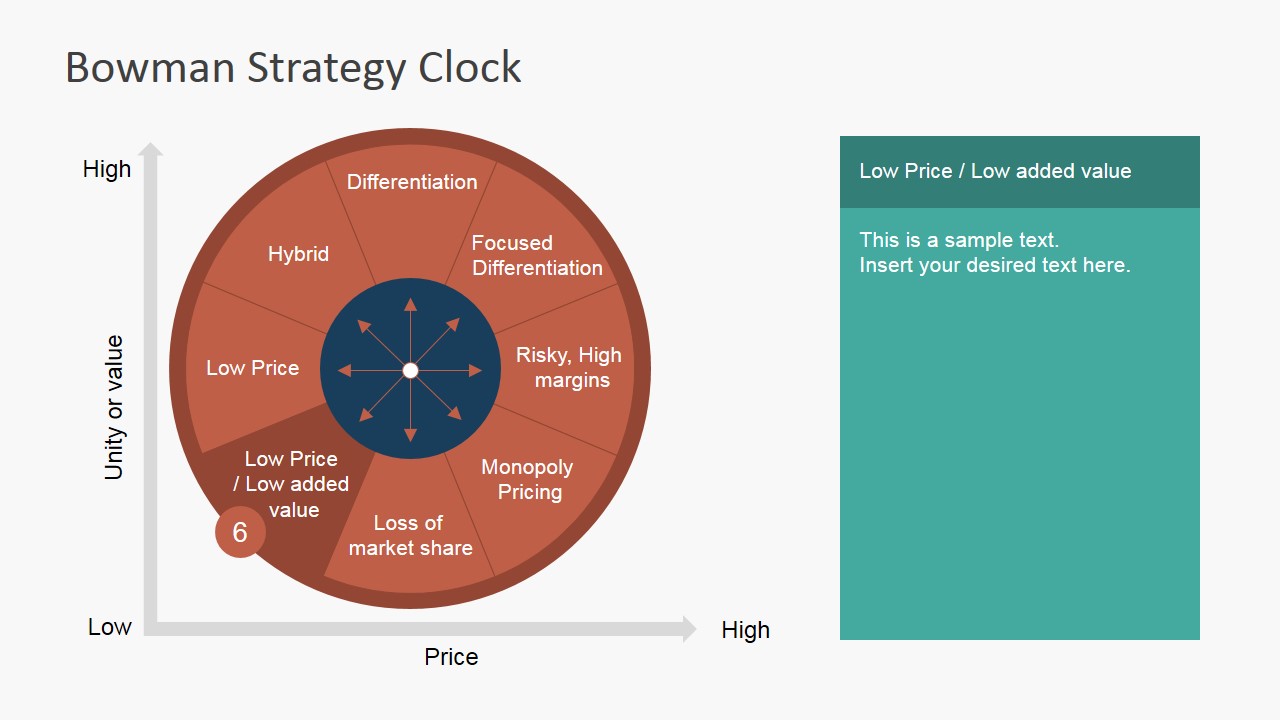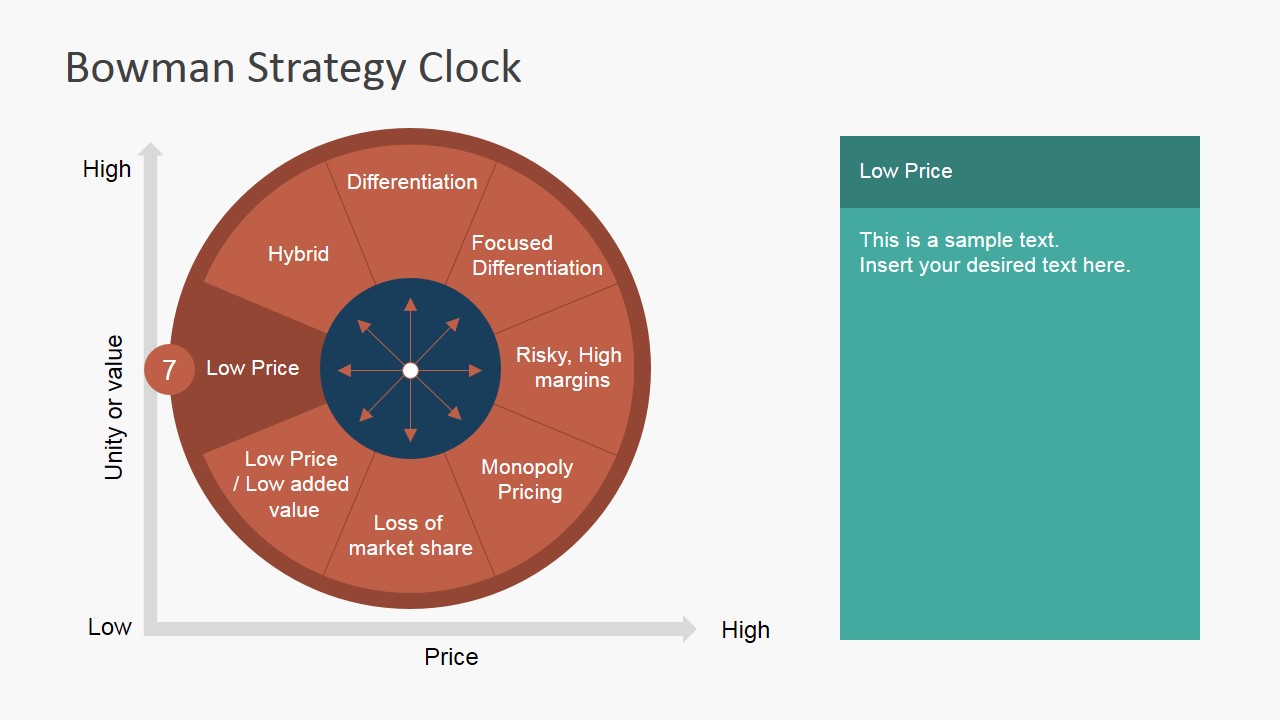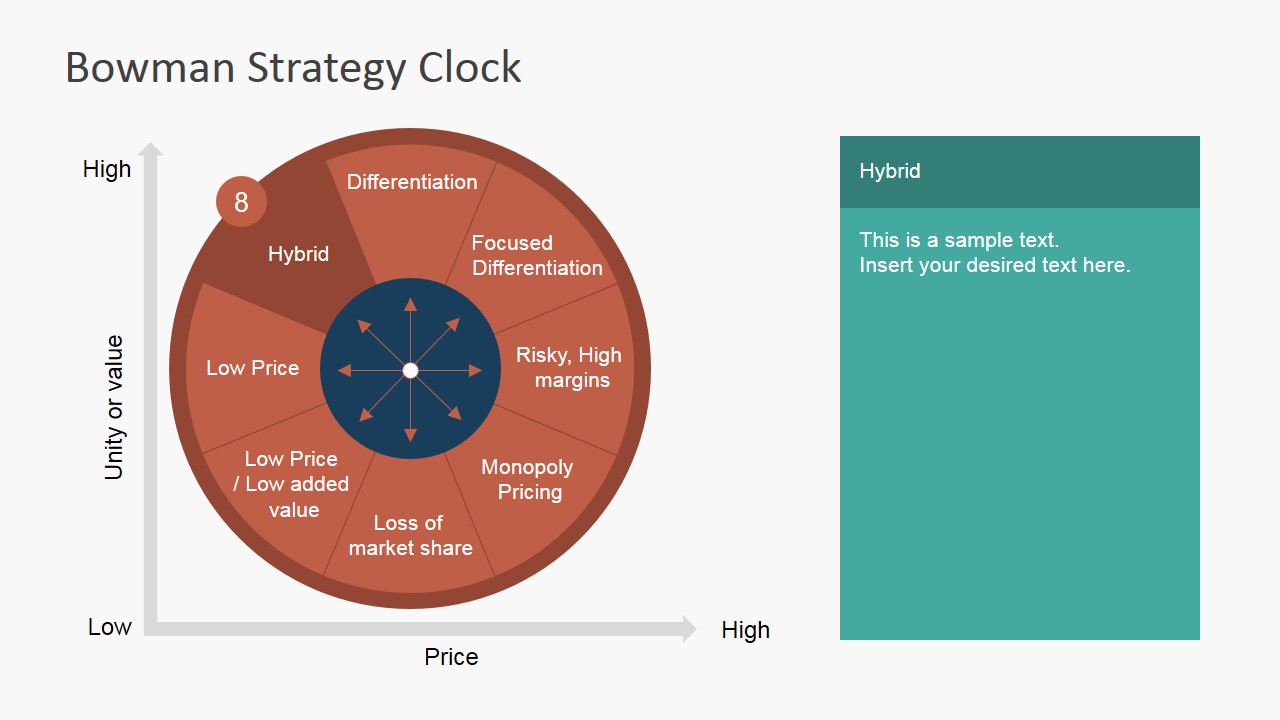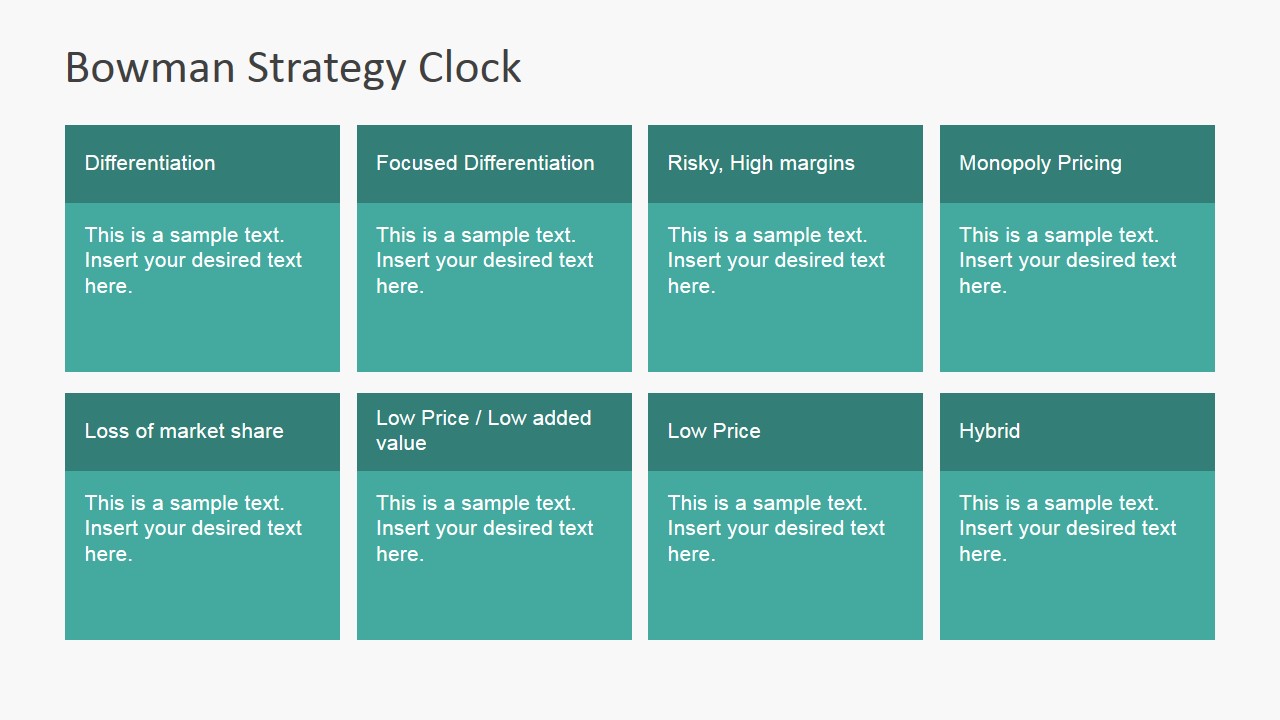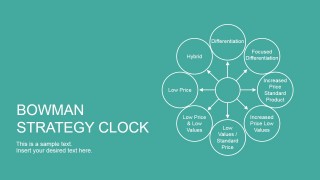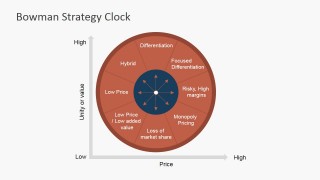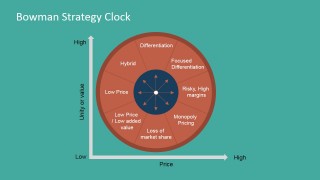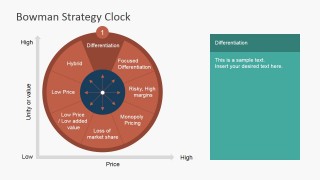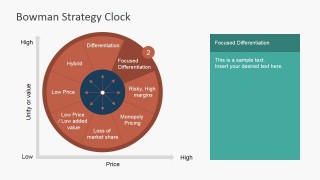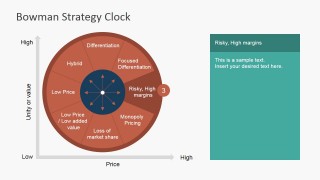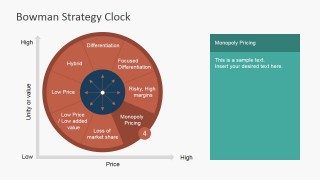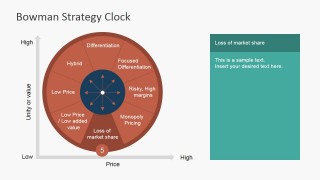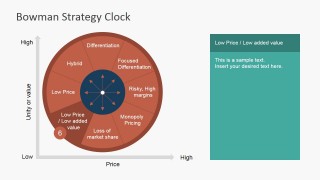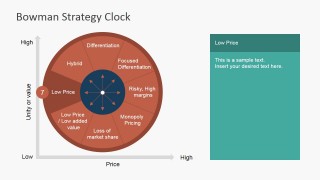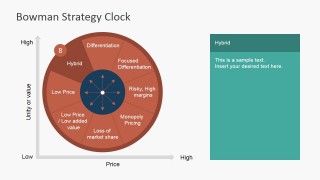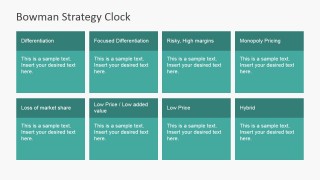Bowman Strategy Clock PowerPoint Diagram
Bowman Strategy Clock PowerPoint Diagram is a professional PowerPoint Presentation Template featuring the popular Strategy Tool Bowman’s Strategy Clock.
The Bowman’s Strategy Clock Model is generally used in Marketing to categorize and describe the competitive position of a company or organization, compared amongst its competitors. Developed by Cliff Bowman as an interpretation of Porter’s generic Strategies, he considers competitive advantages related to cost advantage or differentiation. The Strategy Clock of Bowman is composed as eight strategies that can be mapped across a cartesian axis, where the horizontal axis represents price and the vertical axis represents perceived value. The Resulting shape is similar to a clock.
The Competitive Strategy positions described by Bowman are:
- Differentiation
- Focused Differentiation
- Risky, High Margins
- Monopoly Pricing
- Loss of Market Share
- Low Priced / Low Added Value
- Low Price
- Hybrid
During the Bowman’s Strategy Clock Analysis the questions that need to be asked in order to identify which strategy to pursue are as follow:
If the organization’s competitive advantages are related to price:
- Is your organization a price leader?
- Is your organization ready to sustain a cost leadership position? This means the ability of cost management and margins control.
- Is your organization able to take advantage of all the cost reductions available?
- Does your organization balance low cost and value perception appropriately?
- YOur organization cost advantage is limited to a specific segment or it can be scaled to multiple segments ? Are these segments capable of sustaining your business?
If the organization under analysis intends to compete based on perceived value:
- Does the organization has their target markets identified?
- The organization measures the target market value ?
- Is the organization aware of the perceived value of competitors products/services ?
- Are there areas of differentiation that the organization can capitalize as a competitive advantage against other organizations?
- If actual competitive advantages are replicated by competition, does the organization has other differentiation factors ?
After answering this set of questions, Strategy Analysts can describe the competitive positioning the organization should pursue.
The Bowman Strategy Clock PowerPoint Diagram is 100% editable. It provides adequate placeholders for users to adapt the diagram to their analysis, as well as reusing diagram sections in existing presentations. Create professional Competitive Strategy Analysis that appeals to executive audiences.
